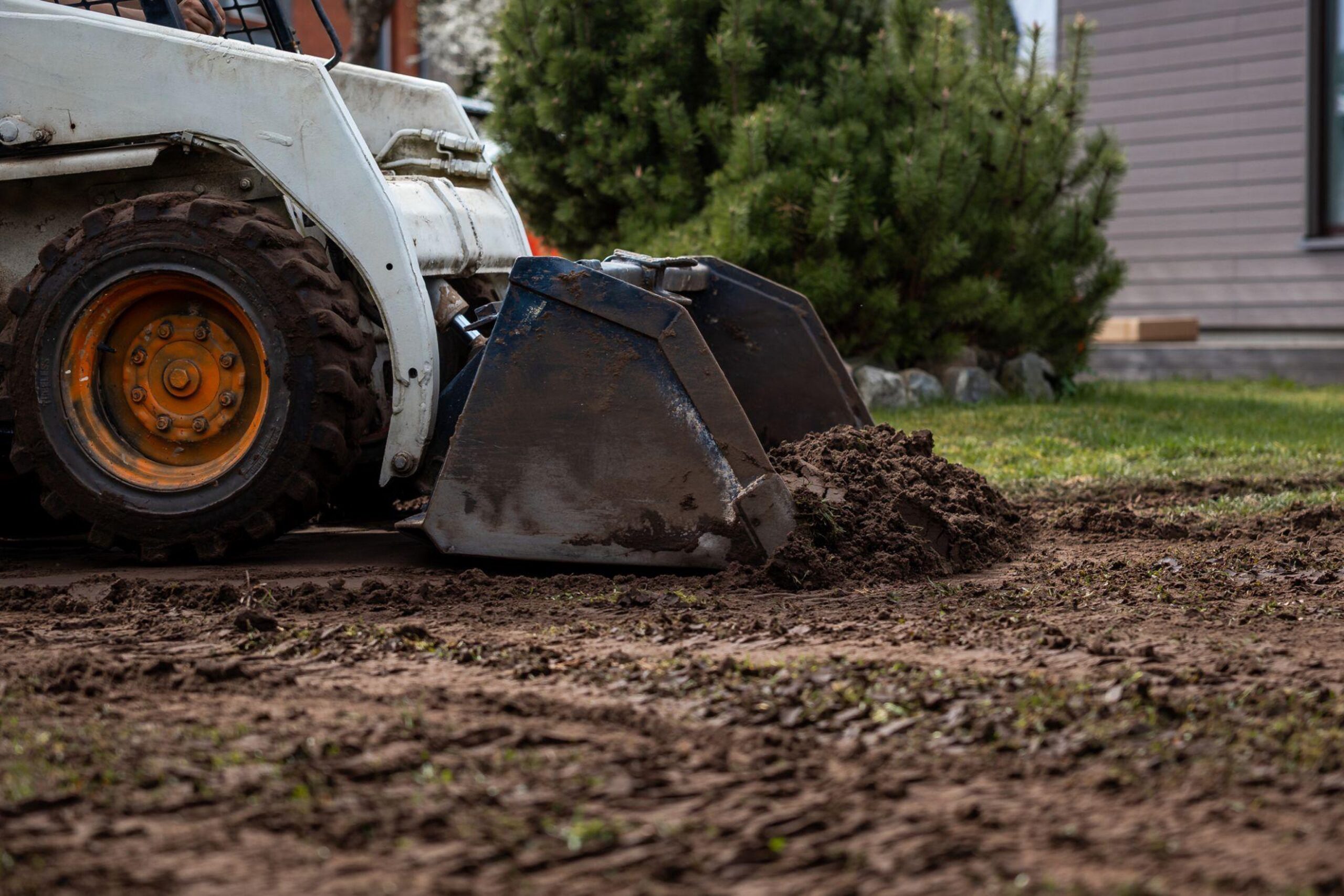Excavation is far more than just moving dirt – it’s a precision-driven phase that sets the stage for everything built above ground. Common excavation mistakes like neglecting soil testing, failing to locate underground utilities, or skipping municipal permits can lead to severe excavation problems, including structural instability, flooding, or costly legal fines. Poor planning may also compromise excavation safety, putting workers and property at risk. By following proven excavation tips and engaging qualified professionals early, you can avoid delays, rework, and unexpected expenses that often run into the tens of thousands.
Table of Contents
- Why Proper Excavation Matters More Than You Think
- 7 Costly Excavation Mistakes (And How to Avoid Them)
- Pro Tips to Ensure a Smooth, Budget-Friendly Excavation
- Final Thoughts: Invest in Precision, Save in the Long Run
Imagine breaking ground on your dream home or commercial build, only to discover – weeks later – that the foundation is shifting because the soil wasn’t properly assessed. Or worse, hitting a gas line during digging because utility markers were ignored. These aren’t rare horror stories; they’re preventable consequences of overlooked details in the excavation phase.
Many Canadians assume excavation is a straightforward task, but even small oversights can snowball into major setbacks. For a closer look at how proper granular preparation and site work contribute to long-term project integrity, read more.
In this guide, we’ll walk through seven of the most expensive excavation mistakes property owners and developers make – mistakes that often go unnoticed until it’s too late. More importantly, you’ll learn practical, field-tested strategies to avoid them, ensuring your project stays on time, on budget, and safe from avoidable risks. Whether you’re managing a residential lot or a commercial site, these insights could save you thousands.
Why Proper Excavation Matters More Than You Think
Excavation is often treated as a preliminary step – a box to check before the “real” construction begins. But in reality, it’s the backbone of any ground-up project. A poorly executed dig doesn’t just cause delays; it can compromise drainage, undermine structural integrity, and even violate municipal codes, leading to fines or mandated rework.
In Canada’s varied climate – from heavy spring thaws in Atlantic provinces to freeze-thaw cycles in the Prairies – soil behaviour shifts dramatically. Without proper grading, compaction, and water management during excavation, you risk settling, erosion, or basement flooding down the line. These aren’t hypotheticals; they’re recurring excavation problems that surface months or years after a project wraps up.
Moreover, excavation safety isn’t just about heavy machinery – it includes shoring trenches, identifying load-bearing zones, and ensuring slope stability. A collapse or cave-in, while rare with proper protocols, can have catastrophic consequences. That’s why understanding the scope, risks, and standards of earthmoving is essential, whether you’re installing a backyard patio or prepping a commercial lot.
7 Costly Excavation Mistakes (And How to Avoid Them)
Even seasoned property owners and developers can fall into traps during the excavation phase – often because the work happens out of sight, out of mind. But the ground doesn’t forgive oversights. What seems like a minor shortcut today can become a six-figure repair tomorrow. Below are seven of the most frequent – and expensive – excavation mistakes, along with practical guidance to steer clear of them.
Skipping a Professional Site Assessment
It’s tempting to rely on visual estimates or past experience, especially on familiar land. However, soil composition, water tables, and hidden debris vary even within the same neighbourhood. A proper geotechnical or topographic survey identifies load-bearing capacity, potential sinkholes, or organic layers that compress over time. Without this data, you risk uneven settling or foundation failure – classic excavation problems that manifest long after construction ends.
Ignoring Local Permit Requirements
Municipal bylaws across Canada require excavation permits for projects beyond minor landscaping. These rules exist to protect public infrastructure, ensure proper grading, and maintain stormwater management standards. Working without approval can result in stop-work orders, fines, or forced backfilling – halting your timeline and inflating costs. Always check with your local planning department before breaking ground.
Underestimating Soil and Drainage Conditions
Clay-heavy soils retain water; sandy soils drain quickly but shift under load. In regions with high precipitation or seasonal frost heave, improper grading can lead to pooling, erosion, or basement seepage. A well-designed excavation plan includes slope gradients, French drains, or granular backfill to manage water flow – critical for long-term stability.
Poor Utility Locating Practices
Before any digging begins, Click Before You Dig (or provincial equivalents like Alberta One Call or Ontario One Call) must be contacted. Hitting a gas, hydro, or telecom line isn’t just dangerous – it’s legally and financially catastrophic. Even if utilities were marked years ago, their paths may have shifted. Always verify with up-to-date locates; it’s a non-negotiable step for excavation safety.
Inadequate Slope and Erosion Planning
Vertical trench walls might save space, but they’re unstable – especially in wet conditions. Provincial safety codes often require sloping, benching, or shoring for trenches deeper than 1.2 metres. Neglecting this not only violates occupational health regulations but invites cave-ins. Additionally, failing to install silt fences or erosion controls can lead to sediment runoff, triggering environmental compliance issues.
Choosing the Wrong Equipment or Crew
Using a compact excavator for a large commercial dig – or vice versa – leads to inefficiency, poor compaction, or surface damage. Equally risky is hiring crews without certified training in excavation safety or site-specific protocols. Experience matters: a skilled operator knows how to read soil behaviour, manage spoil piles, and minimize disruption to adjacent structures.
Failing to Plan for Weather Delays
In Canada, weather is never a “maybe” – it’s a certainty that will impact your schedule. Rain turns clay into sludge; frost locks soil in place. Projects that don’t build in buffer time or protective measures (like tarps or dewatering pumps) often face extended downtime, rework, or compromised sub-base quality. Smart planning includes monitoring forecasts and having contingency steps ready.
Pro Tips to Ensure a Smooth, Budget-Friendly Excavation
Avoiding expensive setbacks starts long before the first scoop of dirt is moved. Seasoned developers and homeowners alike rely on a few key excavation tips to keep projects efficient, compliant, and resilient – especially in Canada’s diverse terrain and climate.
First, build a detailed scope of work that includes soil type, depth requirements, spoil disposal plans, and access routes for equipment. Ambiguity here leads to change orders and delays. Second, schedule excavation during optimal weather windows – typically late spring to early fall in most provinces – when the ground is stable and dry enough for proper compaction.
Third, coordinate with all stakeholders early: surveyors, engineers, utility locators, and municipal inspectors. A single missed coordination point can halt work for days. Fourth, document everything – photos of pre-excavation conditions, daily logs, and inspection sign-offs. This protects you if disputes or warranty claims arise later.
Finally, never treat excavation as a “one-and-done” phase. Backfilling, compaction testing, and final grading are just as critical. Poor compaction, for instance, may not show issues immediately but can cause asphalt or concrete surfaces to crack within a year. Investing in quality control at every stage prevents hidden excavation problems from surfacing down the road.
Final Thoughts: Invest in Precision, Save in the Long Run
Excavation isn’t just about removing earth – it’s about setting the stage for everything that follows. A rushed or poorly planned dig might seem like a minor line item on a budget sheet, but it’s often the hidden source of major headaches down the road: cracked slabs, drainage failures, regulatory penalties, or even compromised excavation safety on site.
The truth is, the cheapest bid rarely delivers the best value. What saves a few hundred dollars upfront can easily cost tens of thousands in repairs, delays, or legal complications. Conversely, investing in thorough planning, qualified oversight, and adherence to best practices pays dividends in durability, compliance, and peace of mind.


